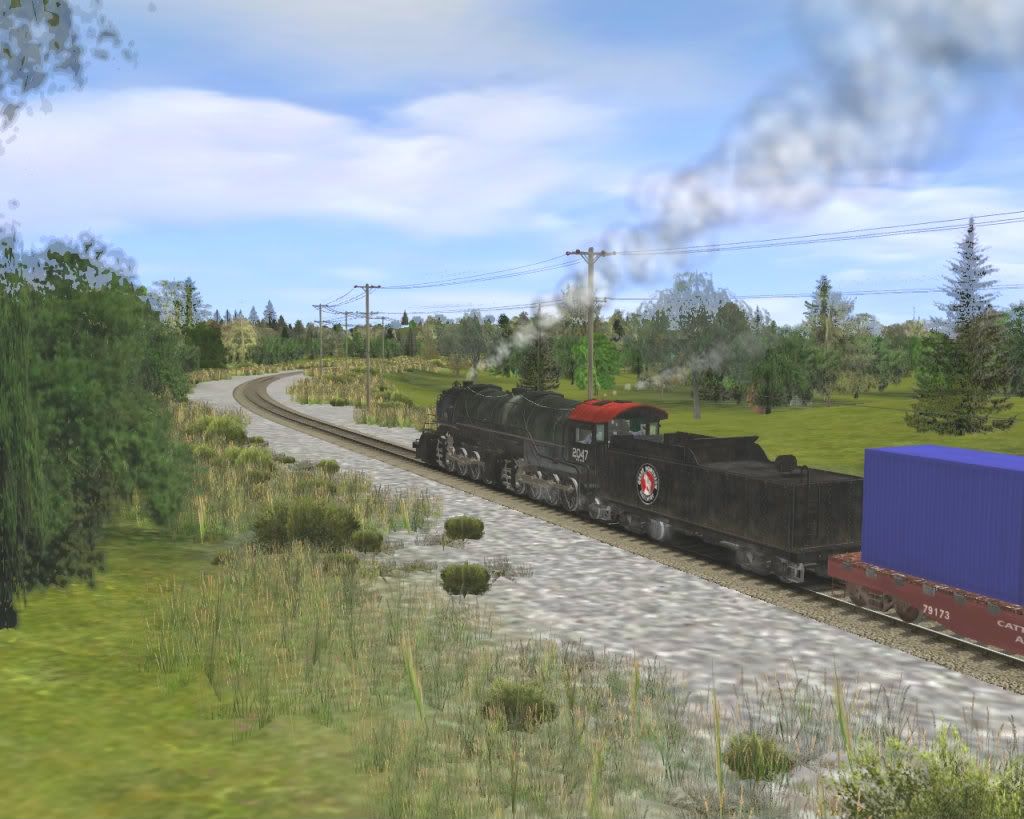OK, here are some answers to some of the questions asked.
The update was TS12 49922 as I stated in OP.
In addition to the 3 Auran Payware Locos that do this, all 14 of Ben Neals steam Locos when starting a session, immediately trigger the safety valve. Many others do it too, but these are the locos I have just tried in the last few hours, because they are all on one route I have.
The pressure when starting is usually within a few pounds of triggering the safety valve, when the valve triggers, you see steam coming out of it on top of the boiler, so it is no a sound loop. It is the actual valve going off. As the valve triggers, the steam pressure drops about 4PSI, below the trigger point, the valve closes, the steam immediately builds back up again to the trigger point and the valve triggers again hence Phhht.....Phhhtttt...Phhhttt..PPhhhht..
Up until this time I have not touched the water, the blower which is off, added coal, or anything else. This is within a few seconds of starting the session. The water usually starts around 40-50%, the coal is loaded to 100%, and I am in Cab mode always. In order to stop this really annoying noise, I have to get the pressure down by letting the coal burn down to around 50%, and add water like crazy. I have not had to use the blower since the update. Most of the routes I am running have speed limits of around 30-40 MPHs, so I have to run cutoff all the way up as high as it will go to try and reduce steam pressure. Once I get the coal level around 50%, usually the valve settles down, and doesn't go off unless I slow way down, or add a bit too much coal.
I have not tried letting the water run low, down to the 30-40-% range, but from reading a 350 page book on the operation and design of steam locomotives, that seems to be something that is not recommended, because if the water gets too low, some really bad things can happen to the boiler and firebox surroundings.
Here is what the update 49922 was supposed to fix..... copied from the Auran website.
- Fixed issues related to boiler pressure and safety valves in Steam locomotives
Download:
Now before the fix, everything worked OK, without having to be totally obsessed with the operation of the loco totally focusing on trying to get the steam pressure below the safety valve trip point and keeping it there. I could add coal to keep pressure up , keep the fire white hot, keep the water around 50%, operate the blower when going slow,
and everything worked perfectly. Now enter the "Fix", and all that goes out the window. Now I can't keep the coal at 100%, I have to burn it down to 50% which can take quite awhile, I have to flood the boiler to cool it and keep the pressure down, ride along with my train brakes dragging and hope I don't hit a steep downgrade with over heated brakes, run the cutoff at 75%, etc..etc,...... I am just about to the point of giving up on steam engines, and going back to all diesels, or re-installing Trainz, and updating it to the last update before 49922 and then I will have what I think is the proper operation of the steam engine
as I had before the update. To me it is a question of, if it "ain't broke, don't fix it". If it was a fix for the safety valve not going off at all, then I think something else needs to be looked at, as far as the threshold of when the valve should activate not being within 1 PSI of the boiler pressure
I will try the suggestion of switching to AI, and then back to self drive and see what effect that has on the steam pressure and valve operation. But I think all these suggestions are band aids for a update that is flawed. Now if I can just find that wav file.....



